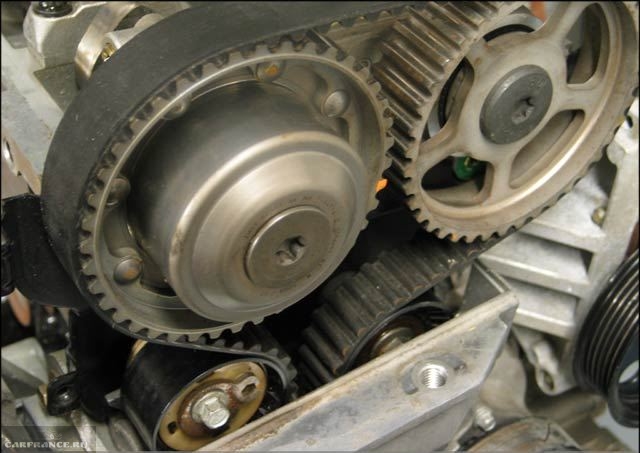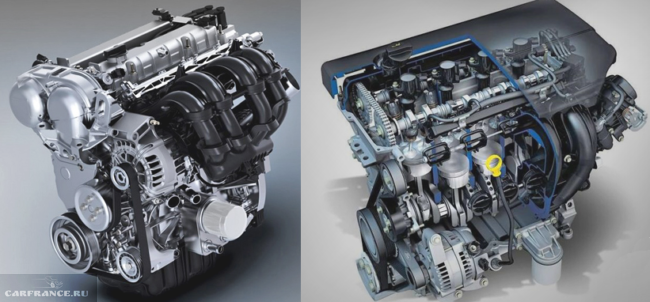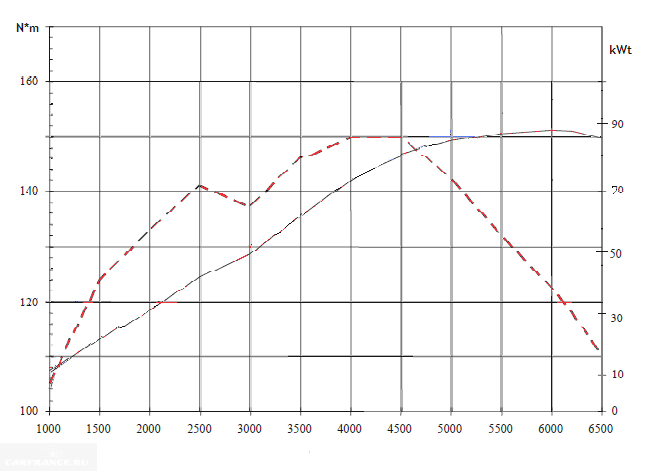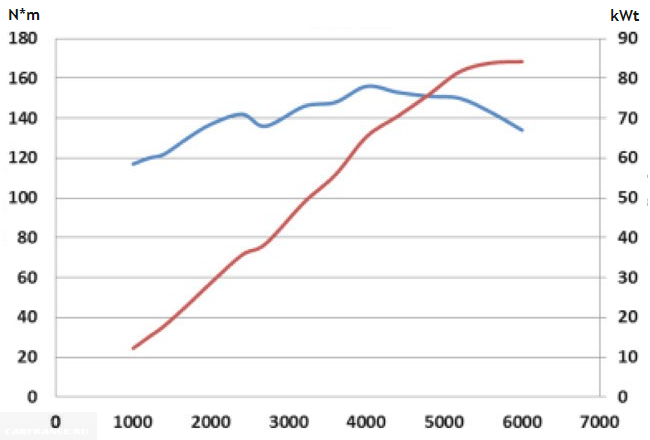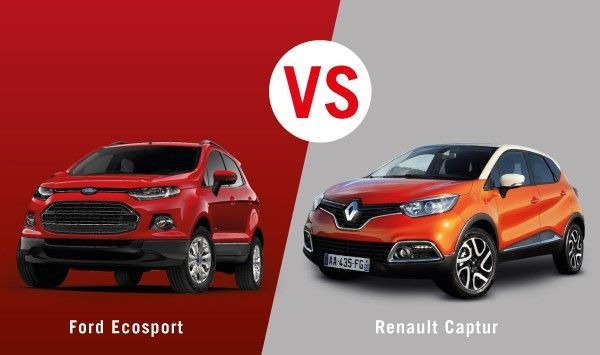- Сравниваем кроссоверы Форд Экоспорт и Рено Каптур, что лучше?
- Только факты
- Сравнение Форд Экоспорт и Рено Каптур
- Может, всё дело в бензине?
- «Экоспорт» – экономичнее. А почему?
- Форд – не быстрее!
- Сравнение Каптура с другими «конкурентами»
- Renault Captur or Ford EcoSport?
- Engine Comparison
- Engine Verdict
- Features Comparison
- Entry Level
- Top Spec
- Spec Verdict
- Price Comparison
- Overall Verdict
- Buying Advice: Renault Captur Pricing & Rivals (Video)
Сравниваем кроссоверы Форд Экоспорт и Рено Каптур, что лучше?
Новинка Форд, которая относится к семейству Экоспорт II, не является полновесным конкурентом для кроссовера Рено Каптур.
Модель Экоспорт на российском рынке зарекомендовала себя неплохо. Смотрим тест-драйв на видео.
Только факты
ЭкоСпорт для молодёжи, именно так позиционирует его Форд. «Зеленые» и молодые, вот основная аудитория. Но Каптур с опцией двухцветной окраски кузова и 8 яркими цветами — серьёзный конкурент в борьбе за молодых покупателей! Тем более, что кузов француза оцинкован.
Объём двигателей у двух новинок одинаковый, 1,6 и 2 литра, и мощность примерно равна тоже. Однако у кроссовера Форд в распоряжении есть только «механика» и «робот», который доступен с моноприводом. Фирма Рено балует покупателя наличием «автомата» и «вариатора». Экоспорт покупают те, кому нравятся коробки Powershift. Все остальные будут долго делать выбор между той и другой моделью.
Сравнение Форд Экоспорт и Рено Каптур
Попытаемся сравнить Рено Каптур и Форд Экоспорт не по параметрам «скорость/разгон/габариты», а только по двигателям. Зачем это нужно, станет ясно дальше.
- Названия моторов Форд: 1,6 Duratec Ti VCT и 2,0 Duratec HE PFI. У Рено всё проще: H4M и F4R (1,6 и 2,0 л);
- Фазорегулятор («умная» шестерня распредвала) есть только на одном моторе – 1,6 Duratec;
Фазорегуляторы Форд Ti VCT
Мощность всех двигателей распределилась так: 114 (Рено 1,6), 122 (Форд 1,6), 140 (Форд 2,0), 143 (Рено 2,0). Мотор Ti VCT «опережает» реношный двигатель за счёт фазорегулятора.
Самое главное: нужен импортный мотор с цепью – покупаем ДВС 2,0 HE PFI. Но этот мотор предлагают с полным приводом и «механикой». Речь идёт о кроссовере Экоспорт, но для бездорожья он подходит слабо.
Может, всё дело в бензине?
Сравним экономичность в двух следующих версиях: 1,6 + 5МКП (4×2) и 2,0 + 6МКП (4×4). Получим таблицу:
Масса автомобилей, то есть их вес, в первой комплектации не отличается. С полным приводом «весовое преимущество» переходит на сторону Форд. Отсюда – повышенный расход топлива. Заметим, что цифры в таблице не отражают реальность объективно: мотор Форд 1,6 «питается» 92-м бензином, а для остальных ДВС нужен 95-й!
ДВС Форд Ti VCT 1,6 и HE PFI 2,0
Похоже, анализируя только цифры, сравнивать Форд Экоспорт и Рено Каптур нельзя. Двум этим авто нужно разное топливо. По крайней мере, это выполнено для двигателей 1,6 л.
«Экоспорт» – экономичнее. А почему?
Наверное, читатель заметил, что модель Форд с мотором 1,6 оказывается более экономной, чем её «конкурент». Здесь можно долго говорить о меньшем диаметре шин, о более коротком ходе подвески и т.д. Всё это относится к делу, но косвенно. Основным преимуществом является двигатель.
Момент сил и мощность, Форд Ti VCT 122 л.с.
Крутящий момент, близкий к максимальному (148 Н*м), мотор Форд развивает в широком диапазоне частот. График в виде «горки» – то, к чему стремятся все. У фирмы Рено пологой горки нет, а есть только резкий подъём (3700-4000 об/мин) и плавный спад (4100-5300 об/мин).
Момент сил и мощность, Рено H4M 114 л.с.
Надо помнить, что двигатель Форд снабжён фазорегулятором. А эта деталь по определению не может быть долговечной. Не то, что цепь ГРМ.
Для двигателей, снабжённых фазорегулятором, требуется очень качественное моторное масло. В фирме Рено, зная о российских реалиях, заменили сложный узел в своём моторе на обычную шестерню.
Форд – не быстрее!
Сравним показатели динамики:
Приведено время разгона до 100 км/час. В первой комплектации кроссовер Форд должен обгонять Каптур, чего в реальности мы не видим. В версии с полным приводом всё предсказуемо: Экоспорт весит больше и оснащён более слабым ДВС, поэтому он – медленнее.
Сравнение Каптура с другими «конкурентами»
Renault Captur or Ford EcoSport?
The Ford EcoSport has been a serious hit in South Africa since its launch way back in 2013. Ford has racked up more than 15 500 EcoSport sales locally with average monthly sales exceeding 1 000 units in 2015. Much of the EcoSport’s success can be attributed to its attractive styling and keen pricing which has put it on top of the sub-compact crossover pile. Not even the once-popular Nissan Juke or Peugeot 2008 come close to selling those numbers. There is a newcomer, however, that poses a threat to the EcoSport, and it’s called the Renault Captur.
The Renault Captur was introduced to market in May 2015 and interest in this vehicle has been huge. In it’s first partial month of sales, just under 500 units were sold, hinting that the Captur is a serious and worthy competitor to the EcoSport. Like the EcoSport, the Captur has much to like in the looks department and it too is keenly priced. But what car is the better buy? Let’s take a closer look to see how the new Renault Captur stacks up against the dominant Ford EcoSport.
Engine Comparison
The Renault Captur currently has three derivatives on offer powered by a three-cylinder, 0.9-litre turbo engine and a four cylinder 1.2-litre turbo engine. The Ford EcoSport on the other hand is by powered by a three cylinder 1.0-litre Ford Ecoboost engine as well as a 1.5-litre engine. There’s also a 1.5-litre TDCi derivative but for the purpose of this comparison we will only focus on the petrol derivatives.
| Renault Captur 0.9-litre Turbo | Ford EcoSport 1.0-litre Ecoboost | Renault Captur 1.2-litre | Ford EcoSport 1.5-litre | |
| Cylinders | 3 | 3 | 4 | 4 |
| Power | 66 kW | 92 kW | 88 kW | 82 kW |
| Torque | 135 Nm | 170 Nm | 190 Nm | 138 Nm |
| Transmission | 5-speed manual | 5-speed manual | 6-speed auto dual-clutch | 5-speed manual or 6-speed auto dual-clutch |
| Fuel Consumption | 4.9L/100km | 5.7L /100km | 5.4L/100km | 6.5L/100km |
Engine Verdict
Although we haven’t tested the Renault Captur 66kW Turbo, we have our reservations about it. On paper, it seems that the Captur is under gunned in the face of Ford’s 1.0-litre Ecoboost engine, which is a remarkably good engine offering excellent performance. For the larger capacity engine offerings, we feel the Renault Captur 88kW Turbo automatic is the better offering as it offers more power and torque over Ford’s 1.5-litre engine. If fuel efficiency is important to you, then the Renault Captur is the car to go for.
Features Comparison
With engines out of the way, let’s see how these two competitors stack up in terms of spec. For this comparison we will examine both the entry-level model and the top-spec model.
Entry Level
| Features | Renault Captur 66kW Turbo Expression | Ford EcoSport 1.5 Ambiente |
| Auto Stop/Start | Yes | No |
| ABS | Yes | Yes |
| EBD | Yes | No |
| Brake Assist | Yes | No |
| Stability Control | Yes | No |
| Alloy wheels | Yes | No |
| Climate Control | Yes | No |
| Multifunction steering wheel | Yes | No |
| Navigation | Yes | No |
| Cruise Control | Yes | No |
| Bluetooth | Yes | No |
| CD Player | No | Yes |
| USB Port | Yes | No |
| Auxiliary Port | Yes | Yes |
| Park Distance Control | Yes | Yes |
| Airbag Quantity | 4 | 6 |
| Interior Space | 377 – 1 235L | 362 – 705L |
Top Spec
| Features | Renault Captur 88kW Turbo Dynamique Auto | Ford EcoSport 1.5 Titanium Auto |
| Upholstery | Cloth (Opt Leather) | Leather |
| ABS | Yes | Yes |
| EBD | Yes | No |
| Brake Assist | Yes | Yes |
| Traction Control | No | Yes |
| Stability Control | Yes | Yes |
| Alloy wheels | Yes | Yes |
| Multifunction Steering Wheel | Yes | Yes |
| Multi Information display | No | Yes |
| Navigation | Yes | No |
| Cruise Control | Yes | Yes |
| Bluetooth | Yes | Yes |
| CD Player | No | Yes |
| USB Port | Yes | Yes |
| Auxiliary Port | Yes | Yes |
| Park Distance Control | Yes | Yes |
Spec Verdict
The Renault Captur is difficult to trump in terms of specification. The entry-level offering is packed with features when compared to the Ford Ecosport 1.5 Ambiente, which looks rather sparsely specced. The spec sheet for the EcoSport however improves somewhat as the trim level improves. A major draw card for the Renault Captur is its space offering. The Captur has the bigger boot with 377L which can be adjusted to 455L which is in contrast to the EcoSports 362L boot. The Captur however takes the cake when the rear seats are folded flat, offering up to 1 235L compared to the EcoSport’s 705L.
Price Comparison
| Renault Captur 66kW Turbo Expression | Ford EcoSport 1.5 Ambiente | Renault Captur 66kW Turbo Dynamique | Ford EcoSport 1.0T Trend | Ford EcoSport 1.0T Titanium | Renault Captur 88kW Turbo Dynamique Auto | Ford EcoSport Titanium Auto | |
| Price | R219 900 | R210 900 | R239 900 | R246 900 | R266 900 | R279 900 | R270 90 |
Renault Captur pricing includes a 5-year/150 000 km warranty and a 3-year/45 000 km service plan.
Ford EcoSport pricing includes a 4-year/120 000 km warranty and a 4-year/60 000 km service plan.
Overall Verdict
Despite being slightly under powered at the entry-level price point, the Renault Captur still offers excellent value when considering the sheer amount of standard specification on offer compared to the Ford EcoSport. At mid-level specification, Ford’s 1.0-litre Ecoboost engine is well worth consideration but buyers will have to opt for the pricey EcoSport 1.0T Titanium to match the specification of the Captur. At the top-end of the range, the Captur pips the EcoSport in the performance department and the Captur offers more space and is more fuel efficient overall when compared to the Ford EcoSport.
Still not sure? Watch this Buying Advice video to get some more information and don’t forget that you can use our Cars Compare tool to see how these vehicles stack up against each other.
